Now to my question: What is your list of tools "at the minimum for most common trail fixes for the Sequoia"?
Christo
Just roll with a rover, bound to have an extensive tool kit
Now to my question: What is your list of tools "at the minimum for most common trail fixes for the Sequoia"?
Christo
Yeah. First 4X4 experience was with in High School with my buddies ancient Series IIA 88". No synchro in 1st and second and the Lucas electrical system was constantly failing. We actually spent a good portion of our summer between our JR and SR years replacing the ENTIRE system with an aftermarket kit. That's where we learned the Rover joke "Why do the British drink warm beer?" "Because Lucas makes their fridges".Just roll with a rover, bound to have an extensive tool kit
Okay- so our kit is pretty similar. Thank you!

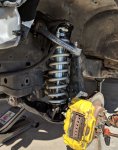
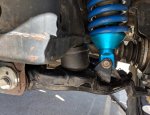
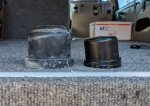

Okay, I've got a couple of questions for you because I'm pretty ignorant when it comes to suspension.
1. How was the ride harsh prior to the Fox coilovers? Were you noticing it only off road, or was it noticeable on road as well?
2. How does unsprung weight affect the ability of the coilovers to function properly?
3. Does the Fox 16" 650 lbs spring hold the front up enough? And did you have a harsh ride with the 14" 700 lbs springs on the Icon's that you used prior? I ask because I'm overdue for a shock rebuild and one of the shops I was talking to thinks I might be oversprung in the front (Icon's with 14" 700 lbs King springs). My ride is pretty harsh right now, but they also said that could be from the nitrogen having gotten past the seal and mixing with the shock oil. If it's a spring issue I may consider a longer 650 lbs spring. You and I probably have a similar amount of weight on the front.
4. You mentioned it was a tight fit with the CV axles. Have you noticed any rubbing on the boots at all?
5. Is there any benefit to running longer bumps like you are, or are the stock bumps sufficient?
Great info Sal. Thanks for taking the time to write it all out. Are all King springs progressive? My Icon's have 14" 700lbs Kings on them right now.
I've noticed that my Icon's fade very quickly on washboard at speed. I'll see how they do after a rebuild and go from there.
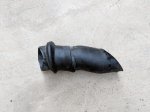


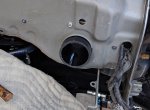

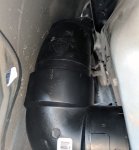
I bet you could open the metal up to fit the 90 in would give you even more clearance with the fender. Why I opt for the rubber 90 I used. Either way it looks clean.
Sent from my iPhone using Tapatalk
Amazing write up! This ladies and gents is how all write ups should be done
